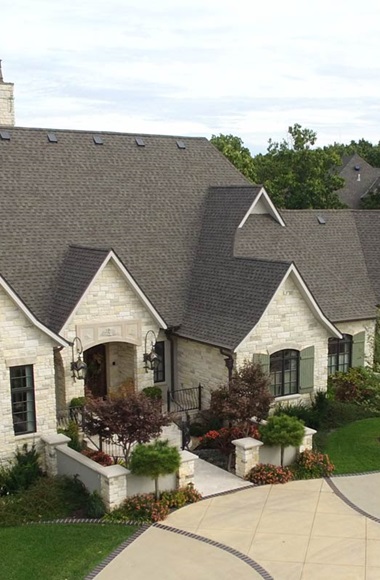Asphalt shingles are used on four out of five homes in the United States, making them the leading choice for residential roofing. It’s not surprising when you consider their many advantages. Asphalt shingles offer the broadest array of colors, shapes and textures available—and they do it affordably.
Shingles will undergo a natural aging process over time. The purpose of this blog is to help you recognize the signs of asphalt shingle aging. By doing so, you’ll be able to distinguish between natural processes that are no cause for alarm and issues that do require attention and repair.
ASPHALT SHINGLES PREVAIL IN AMERICA
3-tab shingles are made with a single layer of fiberglass mat. Laminated shingles consist of two or more layers bonded together, giving them added dimension for a shake-like appearance.
It is natural for your roof to age. The process begins as soon as your shingles are exposed to nature. The sun can raise rooftop temperatures as high as 50–70 degrees above ambient temperature. The excessive heat and ultraviolet radiation from the sun has been shown to accelerate the aging of the shingles’ asphalt layers.
Other factors, such as pollution, hail, tree limbs and people walking on your roof, also contribute to the natural aging process.
Asphalt shingles will begin to age as soon as they are exposed to nature. Minor curling, surface cracking, blisters, algae stains, granule loss and buckling are all signs of aging. Curling is a common phenomenon in some shingles and is not a defect. It is natural for asphalt to age and asphalt layers to shrink with time. This shrinkage may result in the slight curling of the edges of the shingle.
AGING IS NATURAL CURLING
Occasionally, naturally occurring small, circular raised areas known as blisters may appear on your roof. These pockets may vary in size and be open (exposing the asphalt) or closed. Blisters are often a direct result of underestimated attics or excessive use of plastic cement. Closed blisters are not a reason for concern as long as your shingles are still performing their intended purpose of shedding water. However, open blisters do mean asphalt is exposed and immediate attention is required. While minor cracks may not be noticeable from the ground, you might spot them while hanging your Christmas lights. Intense heat from the sun often allows protective asphalt oils to deplete, causing minor cracks.
Keep in mind that these normal weathering characteristics are not cause for alarm as long as your shingles are still performing their intended purpose of shedding water. But cracks that penetrate through the fiberglass or organic mat should be investigated.
SURFACE CRACKING BLISTERS
Since extra granules are used in the manufacturing process, some granule loss is to be expected during the early years of your roof. Other factors, such as foot traffic, hail, snow or brushing tree limbs, may cause loose granules. However, exposed asphalt due to granule loss is a reason for concern and requires immediate attention.
In moist, humid areas, dark brown or black patches may appear on roofs. These streaks result in a dirty rooftop, often more visible on lighter-colored shingles. This naturally occurring stain is caused by algae growth and will not affect your shingles’ ability to shed water. Algae discoloration should not be confused with moss or tree droppings, which typically produce only localized discoloration.
While not technically a sign of aging, a distortion of shingles known as buckling can occur months after original application. Lack of adequate attic ventilation can increase the moisture content of the decking material. This may cause expansion and movement of the wood deck which can lead to buckled shingles.
|
Normal Aging |
In Need of Repair |
|
Curling Surface cracking Closed blisters Algae stains Slight granule loss |
Open blisters Cracks visible through the fiberglass or organic mat Exposed asphalt due to granule loss |

